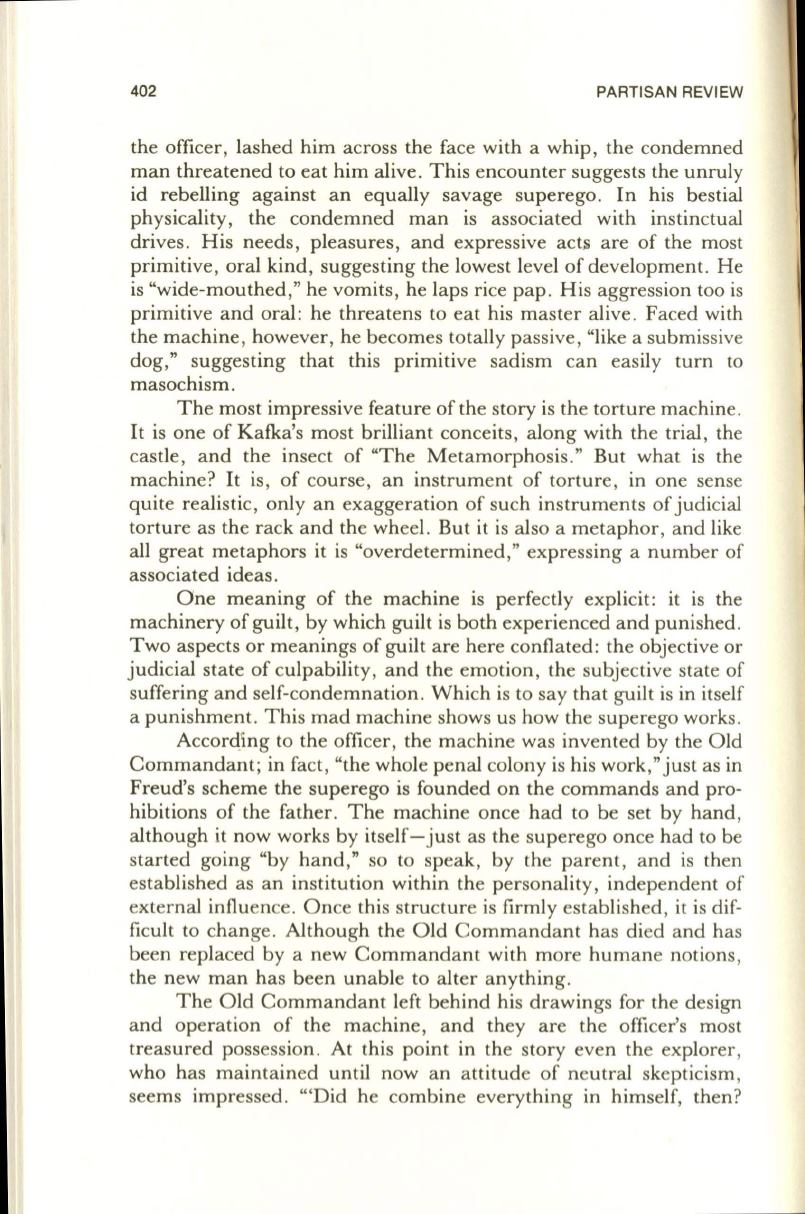
402
PARTISAN REVIEW
the officer, lashed him across the face with a whip, the condemned
man threatened to eat him alive. This encounter suggests the unruly
id rebelling against an equally savage superego. In his bestial
physicality, the condemned man is associated with instinctual
drives. His needs , pleasures, and expressive acts are of the most
primitive , oral kind, suggesting the lowest level of development. He
is "wide-mouthed," he vomits, he laps rice pap. His aggression too is
primitive and oral : he threatens to eat his master alive. Faced with
the machine , however, he becomes totally passive, "like a submissive
dog," suggesting that this primitive sadism can easily turn to
masochism.
The most impressive feature of the story is the torture machine .
It
is one of Kafka's most brilliant conceits, along with the trial, the
castle, and the insect of "The Metamorphosis ." But what is the
machine?
It
is , of course, an instrument of torture , in one sense
quite realistic, only an exaggeration of such instruments of judicial
torture as the rack and the wheel. But it is also a metaphor, and like
all great metaphors it is "overdetermined," expressing a number of
associated ideas.
One meaning of the machine is perfectly explicit : it is the
machinery of guilt, by which guilt is both experienced and punished .
Two aspects or meanings of guilt are here conflated: the objective or
judicial state of culpability, and the emotion, the subjective state of
suffering and self-condemnation. Which is to say that guilt is in itself
a punishment. This mad machine shows us how the superego works .
Accord.'ing to the officer, the machine was invented by the Old
Commandant; in fact, "the whole penal colony is his work ," just as in
Freud's scheme the superego is founded on the commands and pro–
hibitions of the father. The machine once had to be set by hand,
although it now works by itself-just as the superego once had to be
started going "by hand," so to speak, by the parent, and is then
established as an institution within the personality, independent of
e:xternal influence . Once this structure is firmly established, it is dif–
ficult to change . Although the Old Commandant has died and has
been replaced by a new Commandant with more humane notions ,
the new man has been unable to alter anything.
The Old Commandant left behind his drawings for the design
and operation of the machine, and they are the officer's most
treasured possession. At this point in the story even the explorer,
who has maintained until now an attitude of neutral skepticism ,
seems impressed. "'Did he combine everything in himself, then?


